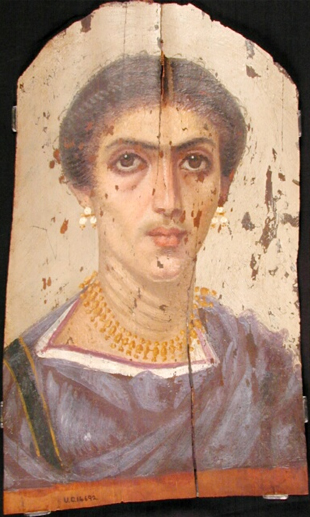In Roman Egypt, wax portraits were bound across the faces of mummified corpses as spells to defeat the finality of death. An exhibition at the British Museum reveals them to be some of the most haunting pictures of human beings in existence.
Hermione was a schoolteacher of Greek descent who lived and worked in Hawara, one of the Egyptian provinces of the Roman Empire, circa AD 25-50. She probably never knew that she was a close contemporary of Jesus Christ. Her views on the afterlife were certainly unaffected by him. She hoped to live eternally, in the Egyptian manner: "May her soul rise before Osiris - Sokar, the Great God, Lord of Abydos, for ever."
Now she is a parcel of bones and shrivelled flesh to which is attached a redeeming bust-length portrait of her as she was in life. Painted by a gifted but anonymous artist one day nearly 2,000 years ago, then bound across the face of her mummified corpse by a meticulous Egyptian embalmer, the picture shows us that Hermione once had sad, liquid eyes and full lips. Her dark hair was centre-parted and combed back tightly behind her ears. She had high cheekbones. She wore pearl earrings and a plain pale tunic.
Listed as catalogue number 11 in the British Museum's current exhibition, "Ancient Faces: Mummy Por-traits from Roman Egypt", the Portrait of a young woman, inscribed in Greek 'Hermione grammatike' in en-caustic on a linen shroud within a complete mummy was donated to Girton College, Cambridge, in the early years of this century by the archaeologist Sir William Flinders Petrie. Imagining Hermione to have been a rather prim and schoolmarmish young gel (undoubtedly Oxbridge material), he thought she would feel at home there. The bequest was his almost fatherly way of acknowledging the power of...


